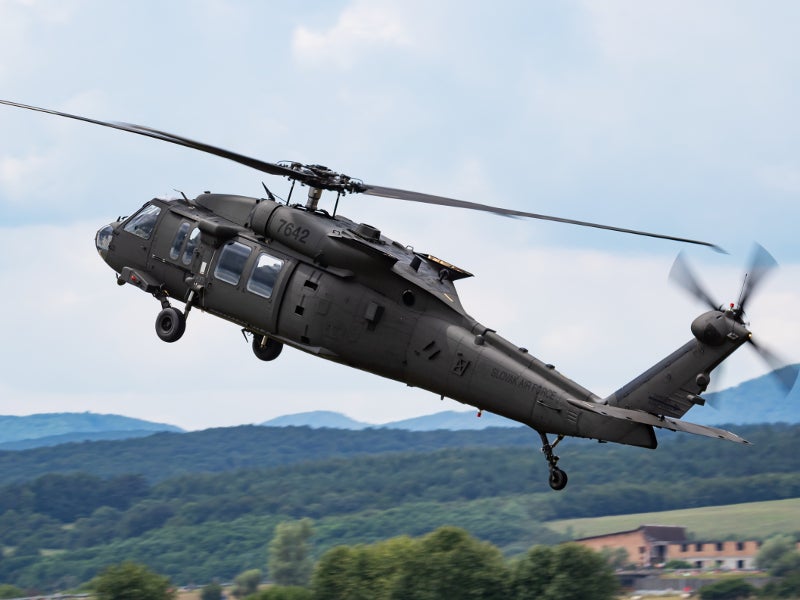Unlocking Peak Performance: UH 60 Helicopter Upkeep Overview
Unlocking Peak Performance: UH 60 Helicopter Upkeep Overview
Blog Article
Comprehending the Mechanics and Design Behind Uh 60 Helicopters
The UH-60 helicopter, generally called the Black Hawk, stands as a peak of modern-day rotorcraft technology, embodying a mix of robust engineering and detailed auto mechanics. From its inception to its present versions, the advancement of this aircraft showcases a fusion of advancement and functionality. As we peel back the layers of the UH-60's style, a world of complex systems and meticulous engineering emerges. Recognizing the mechanics and engineering behind this functional aircraft introduces a realm where precision fulfills power, and where each element plays a crucial function in achieving flight.
Background of UH-60 Helicopters
The history of UH-60 helicopters traces back to the late 1970s when the United States Army looked for a innovative and flexible utility helicopter to replace its aging fleet. In reaction to this demand, the Sikorsky Aircraft Company developed the UH-60 Black Hawk helicopter. Introduced in 1979, the UH-60 quickly came to be a staple in army operations because of its outstanding capabilities.
The UH-60 was made to master a selection of goals, consisting of troop transportation, clinical emptying, digital war, and special operations. Its capability to adjust to various roles made it a valuable possession to the united state Military and other army pressures around the globe
Throughout the years, the UH-60 system has actually undergone several upgrades and variations to enhance its performance and equal evolving goal demands. These helicopters have actually seen extensive solution in conflicts such as the Gulf War, Afghanistan, and Iraq, showcasing their integrity and adaptability in varied operational environments. The UH-60's rich history is a testament to its long-lasting heritage as a top energy helicopter.

Engine and Power Systems
Using advanced propulsion innovation, UH-60 helicopters are geared up with innovative engine and power systems to make sure optimum performance and dependability in a variety of operational situations. The UH-60, generally called the Black Hawk, is powered by 2 General Electric T700-GE-701D engines, each with the ability of supplying up to 1,940 shaft horse power. These turboshaft engines offer the needed drive for the helicopter to execute its goals successfully, including troop transport, clinical discharge, and fight assistance.

Blades System and The Rules Of Aerodynamics
How do the rotor system and aerodynamics of UH-60 helicopters add to their operational effectiveness and flight abilities? The blades system of the UH-60 helicopter plays a vital duty in providing lift and propulsion.
Aerodynamics additionally play a vital duty in the performance of UH-60 helicopters. The streamlined fuselage and blades blade style reduce drag, permitting the helicopter to achieve higher rates and far better gas performance. The aerodynamic design of the UH-60 additionally adds to its capacity to run in diverse environmental conditions, including hot temperatures and high altitudes.
Avionics and Trip Control Systems

In its elaborate control with the rotor system and aerodynamics of UH-60 helicopters, the avionics and trip control systems develop a vital network of modern technologies forming the airplane's functional capabilities. Avionics incorporate the electronic systems made use of for communication, navigation, and monitoring different airplane functions. In the UH-60, these systems include digital display screens, communication radios, GPS navigating, weather radar, and autopilot systems. These avionics systems offer crucial information to the pilots, improving situational understanding and making sure efficient and safe operation of the helicopter.
The trip control systems of the UH-60 are in charge of translating the pilot's inputs right into the suitable changes to the rotor system, making certain secure trip and visit this page ability to move. These systems consist of hydraulic actuators, servos, and computer systems that interact to control the tail and primary rotors, as well as other flight control surface areas. By precisely managing the helicopter's trip dynamics, these systems enable pilots to carry out a variety of objectives, from transportation and search-and-rescue to battle procedures, with accuracy and confidence.
Duty and Applications in Air Travel
Avionics systems in UH-60 helicopters incorporate an array of electronic systems that help in navigating, interaction, monitoring, and controlling numerous airplane functions. These systems include digital display screens, auto-pilot systems, communication radios, GPS navigating equipment, and weather condition radar. In addition, these systems incorporate safety and security attributes such as auto-pilot settings, surface recognition cautioning systems, and stability augmentation systems to improve the overall safety and security and operational abilities of the UH-60 helicopters in different missions, including troop transport, medical emptying, search and Visit Your URL rescue, and aerial firefighting.
Final Thought
In final thought, the UH-60 helicopter is a versatile aircraft with an abundant background and advanced engineering. Its engine and power systems, rotor system, the rules of aerodynamics, avionics, and flight control systems all interact to make it a efficient and trustworthy maker. The UH-60's duty and applications in aeronautics are substantial, ranging from armed forces procedures to search and save goals. Its proceeded growth and usage demonstrate its importance in the area of aeronautics (uh 60).
In its detailed sychronisation with the rotor system and the rules of aerodynamics of UH-60 helicopters, the avionics and flight control systems form an essential network of modern technologies forming the airplane's functional Go Here capacities.The flight control systems of the UH-60 are liable for converting the pilot's inputs into the appropriate adjustments to the rotor system, making certain stable trip and maneuverability. Avionics systems in UH-60 helicopters incorporate a range of electronic systems that help in navigation, communication, monitoring, and regulating numerous aircraft functions. Furthermore, these systems integrate safety and security features such as autopilot modes, surface understanding warning systems, and stability augmentation systems to enhance the general safety and security and operational capacities of the UH-60 helicopters in various missions, including army transport, clinical discharge, search and rescue, and airborne firefighting.
Its engine and power systems, blades system, aerodynamics, avionics, and flight control systems all function with each other to make it a efficient and reputable equipment.
Report this page